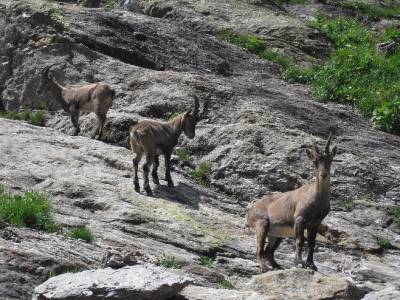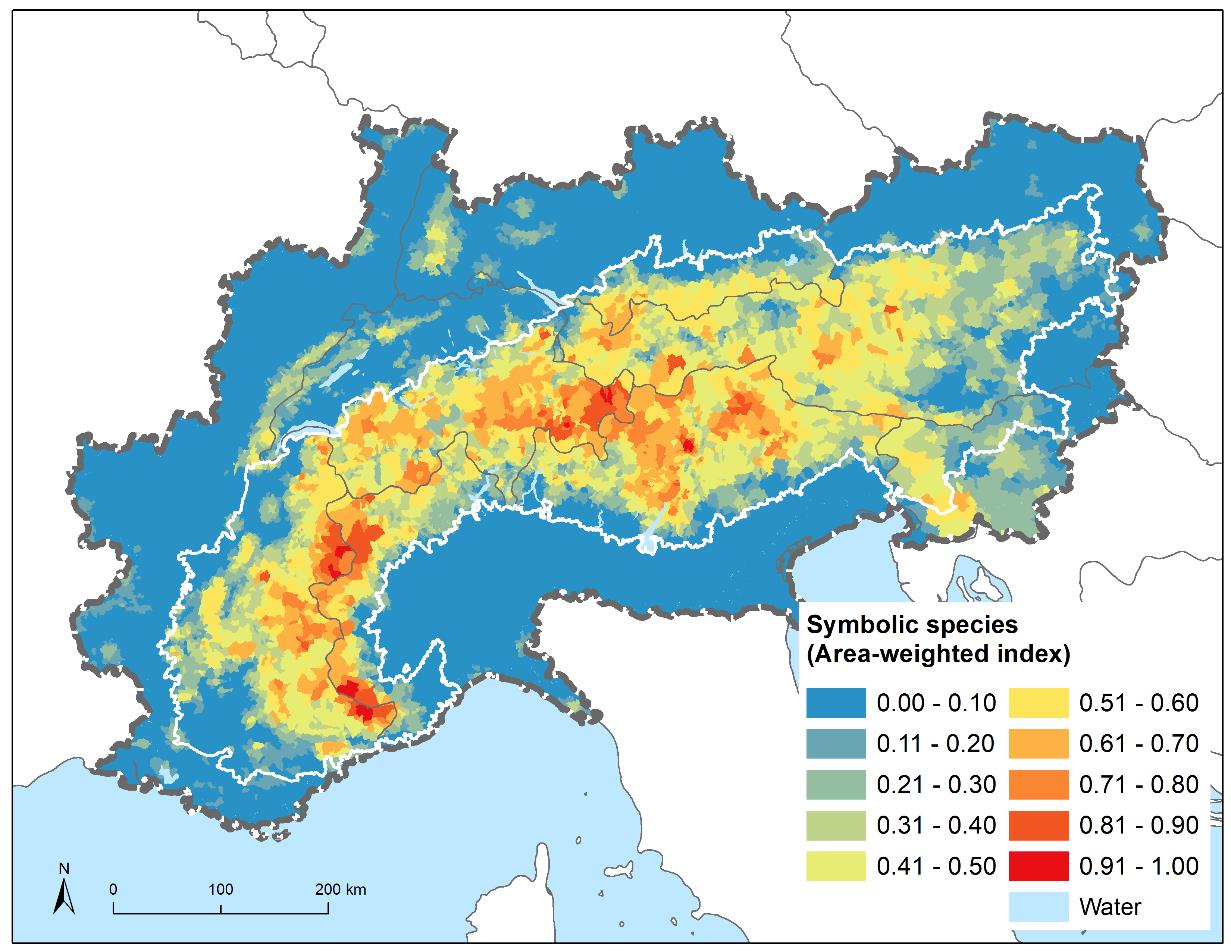Symbolic plants and animals
Plants and animals are entangled with human culture in multiple ways and can be used to symbolize social and political attitudes and societal values. They contribute to the shaping of emotions, experiences, thoughts, values and cultural identities and are thus reflected in art, literature and language, mythology and religion, music, politics and worldwide events. Plants and animals can be of symbolic importance for a certain place. Due to social development, they can also function as representatives for cultural identity and heritage on local, regional or even national level, and are recognized as such by people from elsewhere. For example, the edelweiss is strongly associated with the Alps and is used for marketing purposes in the local travel destinations (Fig 1). Further, it appears in alpine folklore and naming of hotels and products.
Fig 1: Alpine Ibex and edelweiss are important symbols of the Alps. Picture: Uta Schirpke
Although symbolic values are listed as cultural ecosystem service (e.g. in CICES), only a few studies about this topic are available. Therefore, the spatial distribution of selected symbolic species was determined and summarized to an index within the scope of the AlpES Project. With the help of ten expert groups from different alpine regions, ten species (five plants, five animals) which are considered as symbolic for the alpine space were identified. The flowers edelweiss, alpine rose and gentian, as well as larch and various pine species were numbered among the symbolic plants. The alpine ibex, chamois, marmot, golden eagle and bear were chosen as symbolic animals. For the listed species, different examples of symbolic use were collected, e.g. how they are used on flags and emblems, coins, logos, naming of hotels, restaurants, associations and companies. The spatial distribution of the species mainly concentrated on the high mountain ranges along the French-Italian border, the Canton of Grisons in Switzerland and the Italian provinces Trentino, South Tyrol and Belluno (Fig2).
Fig 2: Area weighted index of symbolic species in the Alpine Space Region. The white line shows the boundary of the Alps according to the Alpine Convention. Source: Schirpke et al. (2018).
This study methodologically contributes to the mapping and analysis of symbolic species as cultural ecosystem service and provides interesting insight in the meaning of these species in the Alpine region. These insights can be used as an important basis for landscapes planning, however, at the same time, a number of questions occur: for instance, does the conservation of species also preserve the symbolic value and is a connection between the spatial distribution of the abundance and the use.
Symbolic plants and animals in the AlpES project
Within the AlpES project the provision dynamics of the ES symbolic alpine plants and animals, landscapes in the Alps were assessed by means of the following supply, demand and flow indicators:
- Supply: Habitats of symbolic species (index)
- Flow: Occurrence in hotel names (nr. of hotels)
Bibliography
Schirpke, U., Meisch, C. & Tappeiner, U. (2018). Symbolic species as a cultural ecosystem service in the European Alps: insights and open issues. Landscape Ecology 33(5), 711–730. https://doi.org/10.1007/s10980-018-0628-x


